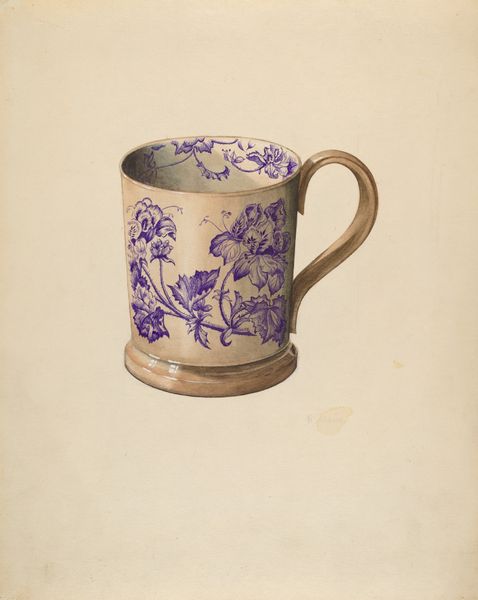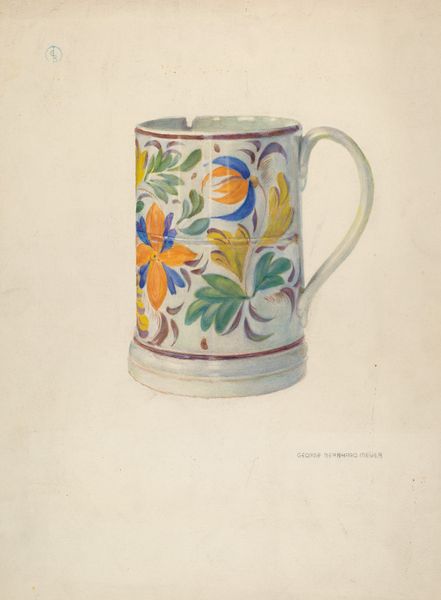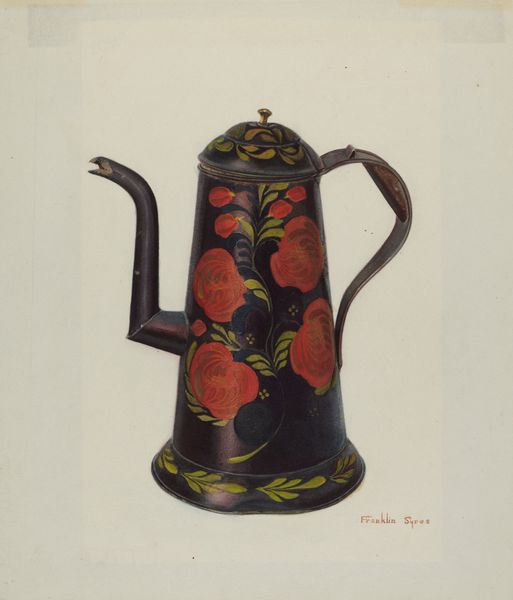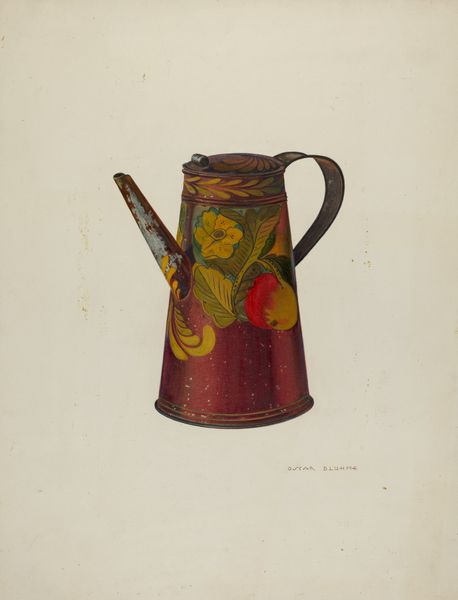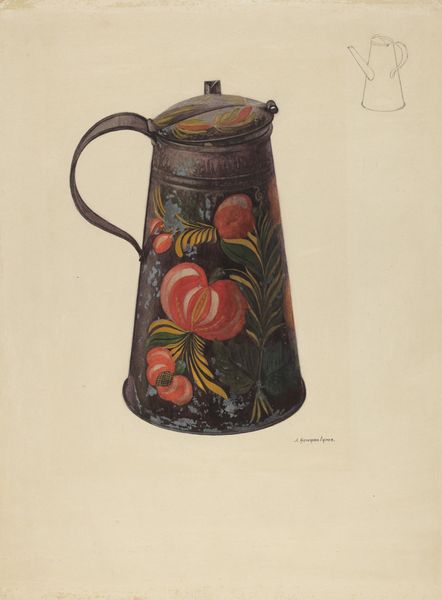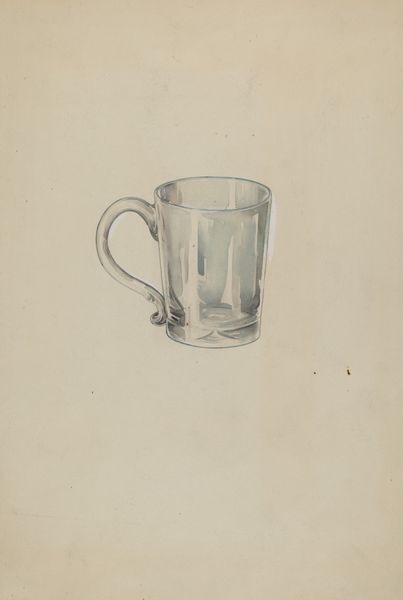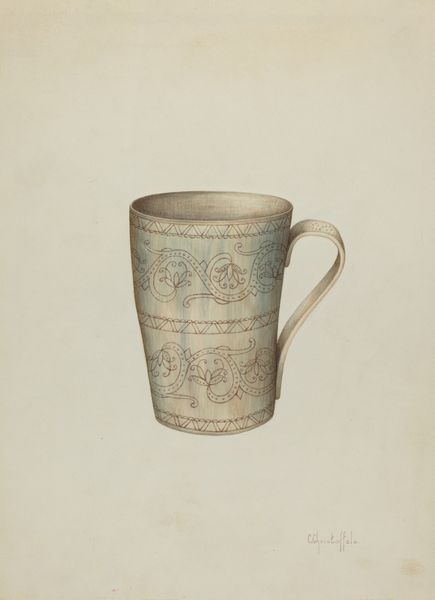
drawing, watercolor
#
drawing
#
watercolor
#
ceramic
#
watercolour illustration
#
decorative-art
Dimensions: overall: 29.3 x 24.7 cm (11 9/16 x 9 3/4 in.) Original IAD Object: 4 1/2" high; 3 5/8" in diameter
Copyright: National Gallery of Art: CC0 1.0
Curator: This watercolour and drawing titled "Toleware Mug," created in 1941 by Samuel O. Klein, presents a humble domestic object elevated through artistry. What strikes you first about it? Editor: The darkness, actually. The almost monochromatic base colour contrasts sharply with the rather folksy floral design. It gives it a weight, a seriousness, I wouldn’t necessarily expect from such a subject. Curator: Absolutely. The historical context here is crucial. Created during the height of World War II, this piece reflects a desire to preserve and celebrate American folk traditions amidst global upheaval. Everyday objects, especially those connected to home and hearth, took on new significance. Editor: So the decoration becomes almost like a shield, protecting an idea of simpler times. The formal elements, that bold silhouette and the vibrant yet controlled ornamentation, speak volumes. Curator: Exactly! The toleware itself represents a working-class craft tradition, often made by women in rural communities. Reclaiming it through art honors those forgotten voices and traditions. Think of the material culture implications! Editor: The artist seems intent on honoring that, rendering it so meticulously. Look at the deliberate brushstrokes that define the reflective surface of the mug; the choice of medium highlights the artisanal origins while softening any harsh industrial edges. The structure supports, even emphasizes, that historical meaning. Curator: Yes, Klein presents this object as more than a vessel; it is a symbol, embodying a longing for continuity and connection to a shared cultural past. The very act of painting it becomes a political act of preservation and celebration. Editor: Looking again at that colour palette – earthy tones punctuated by these little bursts of color - now I'm struck by a certain subdued hopefulness in its message. Almost as though the object is declaring resilience, perhaps whispering that beauty endures even within stark realities. Curator: Indeed, through this careful watercolor, Klein reframes the ordinary and transforms it into a powerful emblem of identity and cultural memory. It makes me think about the power of objects to embody resistance to erasure, which always involves struggle between marginalized and mainstream communities. Editor: Agreed. I began with a formal reaction, and yet, understanding context really amplifies the quiet complexity embedded within this little mug.
Comments
No comments
Be the first to comment and join the conversation on the ultimate creative platform.
